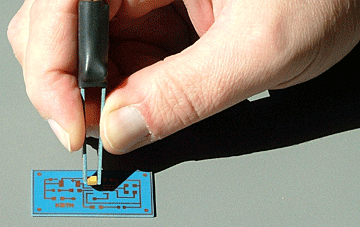
Hereís a simple tool you can build in one evening thatís great for sorting surplus SMD components. FAST!
By
Dean F. Poeth II, K8TM
218 Gower Rd.
Schenectady, NY 12302
Poeth.com

Passive surface mount devices (SMDs) can be difficult to test. If you try to use test probes and a multimeter they will flip or spin out of the probe tips when you apply pressure, which can be very frustrating.
A better way is to build the SMD test tweezers shown in Figure 1. They will grip SMD capacitors and resistors squarely, allowing for a quick and easy measurement. I use these and an autoranging multimeter (the Craftsman autoranging multimeter model 82040 (about $20.00)) shown in Figure 2 to quickly double-check the value of each component before mounting it to the printed circuit board.
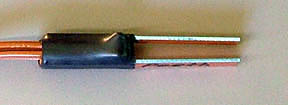
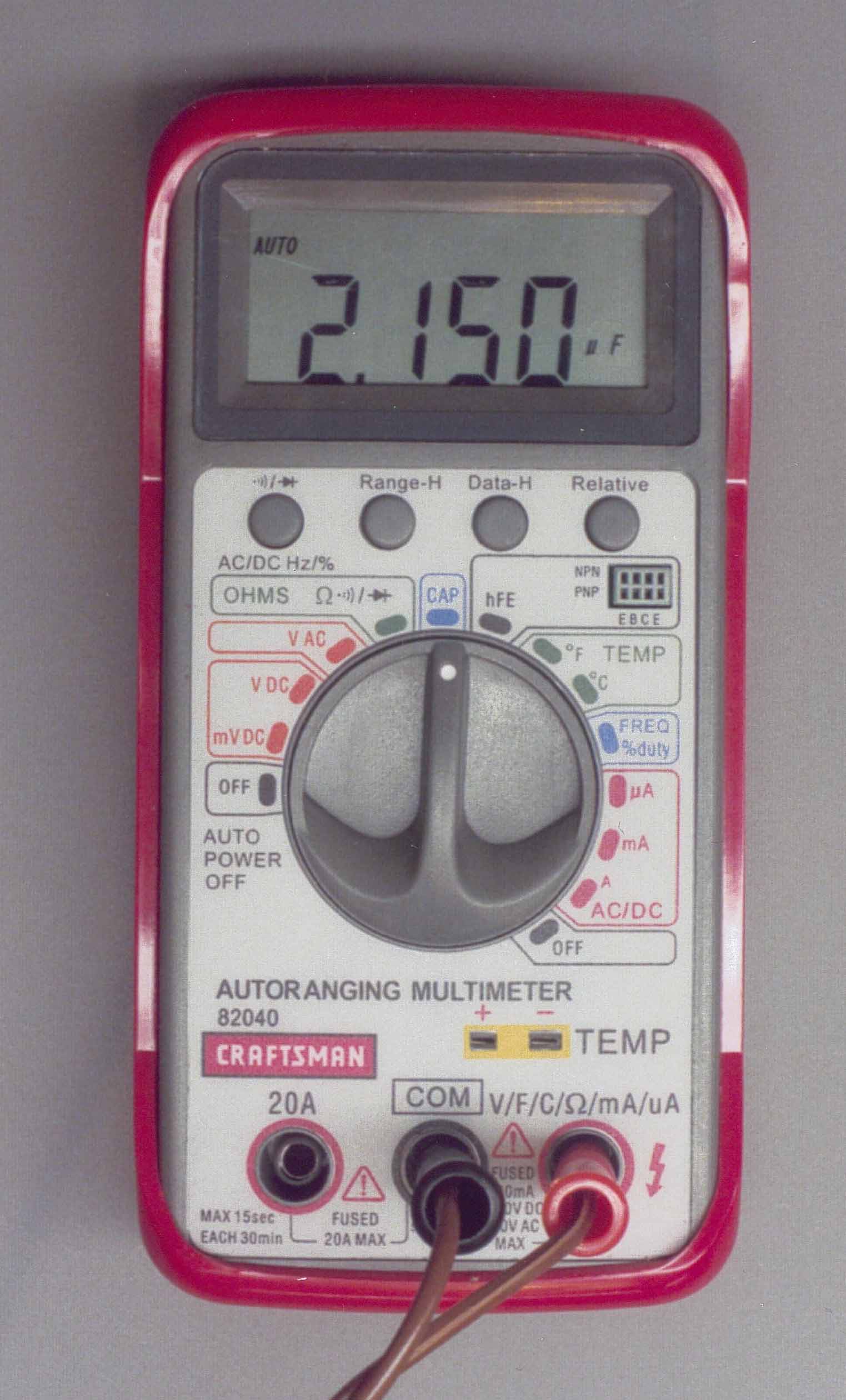
The tweezers are an easy one-evening project. Cut out the parts shown in Figures 3 and 4. Polish the copper side of the printed circuit board using a plastic abrasive pad until it is shiny. Glue the assembly together using five-minute epoxy adhesive, making sure the foil side is in. After the glue has cured, squeeze the tweezers together and carefully sand the tips so they are flush with each other and square. Remove any sanding burrs from the end with a small file. Next, solder the test leads to the foil, being careful not to overheat the epoxy.

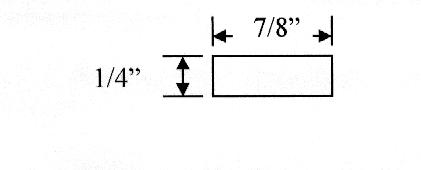
Figure 4. The spacer block is made from any hardwood.

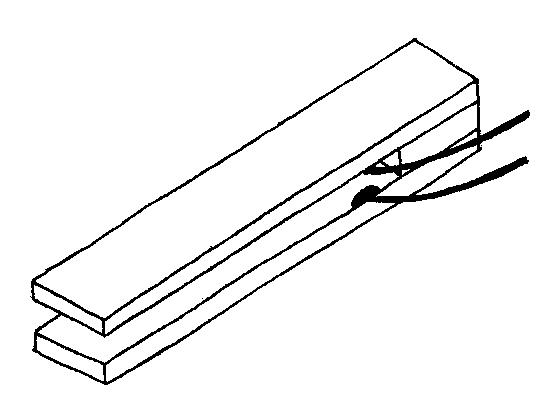
Figure 5. Assembly of the SMD test tweezers.
Finish up by using heat-shrink tubing or electrical tape to keep the wires out of the way. Keep the leads short to the multimeter to minimize stray capacitance.
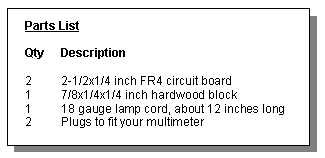
To use the tweezers, simply connect them to an autoranging Ohmmeter or capacitance meter and grip the SMD. Very rapid measurements are possible using this simple tool, which is great for sorting surplus SMD components.
Conclusion
Building this simple tool is quick and fun. Best of all, you will find it a very useful addition to the SMD workbench.
Author's Bio
Dean F. Poeth II, 218 Gower Rd., Schenectady, NY 12302 holds MS and Ph.D. engineering degrees from The Pennsylvania State University and BS in engineering from The Ohio State University. He is a registered professional engineer in Ohio and a member of the National Engineering Honors Society (Tau Beta Pi), Industrial Engineering Honors Society (Alpha Pi Mu) and Honors Society (Phi Kappa Phi). Dean works at Lockheed Martin in Schenectady, New York. He holds extra class amateur radio and general radiotelephone licenses.
Copyright ã 2004 by Dean Poeth. http://poeth.com/ All commercial rights and all electronic media rights fully reserved. Reposting is expressly prohibited.
Home: http://poeth.com/